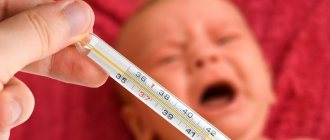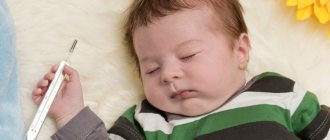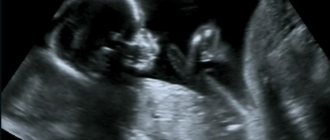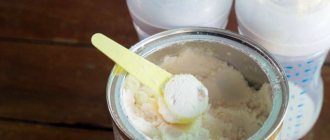The process of thermoregulation is one of the most important physiological mechanisms, which ensures the constancy of the internal environment and the course of all biological reactions. Normal human body temperature is between 36.5 and 37.2 degrees. This range of temperature values guarantees the normal functioning of the body's defenses and other vital systems.
Under the influence of infectious and non-infectious factors, children of different ages may experience an increase in body temperature. This condition is usually accompanied by general malaise, headache, body aches and decreased appetite. In order to have an idea of the true indicators of the child’s body temperature, parents often use a mercury thermometer.
Mercury thermometer
The most accurate device, there is practically no deviation from the temperature measurement, and errors are rare and are calculated in fractions of a degree. Another advantage is the possibility of disinfection. This device can measure the temperature in the armpit, mouth and rectum.
A mercury thermometer has two disadvantages - the duration of measurement and fragility. The thermometer will have to be left in the armpit for 10 minutes, in the mouth and anus for 5 minutes, which causes difficulties when measuring temperature in infants. The thermometer is made of glass, and is filled with the substance mercury, which causes poisoning of the body. Therefore, it is important to be careful when using it, especially in children.
Recommendations for correct measurement
Infrared and electronic devices are sold complete with instructions. Mercury manuals do not have. How many minutes to hold the mercury thermometer depends on the chosen location for measurements. When using models that have been in use for a long time, the procedure should be carried out for 12-15 minutes, since such devices heat up more slowly. To obtain the correct information, experts recommend:
- Warm the device slightly before using it on a small child. A cold thermometer causes discomfort.
- Do not take measurements after taking a shower or playing sports. Water can cool or heat. Physical activity often leads to a slight increase in temperature. The procedure should also not be performed after eating. Wait about 30 minutes.
- Be at rest, preferably lying or sitting. You should not talk unless necessary. Eating is prohibited.
- Take measurements again with the same thermometer.
- Wash the device before and after taking measurements only with cool water. A low temperature will help reset previous readings.
When asked whether it is possible to measure the temperature under the knee, doctors answer in the affirmative. But it is advisable to do this only in cases where other methods cannot be used. The patient must lie down. The thermometer is held under the knee for at least 7-10 minutes.
The device must be stored in a special hard case, in which it is most often sold.
If there is no case, select a container that will replace it (cardboard box, pencil case for pens and pencils). If the mercury model breaks, the mercury should be collected carefully, without touching it with unprotected hands, and then taken to a collection point for household waste containing mercury. The device body must be disposed of in a waste bin specially designed for glass.
What temperature “should” be?
It turns out that normal temperature does not have a single exact number, and 36.6° is just the average of possible values.
says : “The average norm is considered to be 36.6°C under the arm, but in fact, this norm is different for everyone. It ranges from 36.1-37.1°. In order to know your normal or your child’s normal, it is advisable to sometimes measure body temperature in a normal state.
Also keep in mind that the temperature of babies up to one year old can fluctuate depending on the ambient temperature, because thermoregulation mechanisms are still just getting better, and a child can be hot only because he is warmly dressed, or the air temperature in the house is quite high.”
As pediatrician Anna Levadnaya notes in her blog, temperature does have a normal range and depends on many factors: “age, gender, time of day, level of activity, emotional stress, amount of clothing the child is wearing, environmental conditions, ethnicity, clinical circumstances ( for example, immune deficiency, a number of diseases) and the part of the body where the temperature is measured.”
In a child of the first year of life, a temperature of up to 37.5 under the armpit is considered normal; in an older child, such indicators may already be alarming, especially if the child is lethargic. There is no need to bring down such a temperature - this is done only in exceptional cases - any indicators from 38 degrees are considered unconditionally elevated.
Keep in mind that a child under 2 years of age may have a lower temperature in the morning than in the evening, and fluctuations of 0.5-0.6 degrees are possible during the day.
In any case, to correctly interpret the thermometer readings, doctors recommend paying attention to the child’s general well-being and only then taking or not taking any measures.
Methods for measuring temperature in infants
There are several ways to measure the temperature of a newborn. Parents should choose the most appropriate method according to the situation and age of the baby.
Rectal
Despite the fact that this method gives the most accurate results, pediatricians do not recommend using it very often in young children. If parents decide to use this method, then they should do everything according to the rules. It is important to place the thermometer in the anus very carefully, especially if it is glass. First, it should be warmed to room temperature, the tip should be lubricated with Vaseline or massage oil. You should not use baby cream, as it often causes tingling and the baby will behave restlessly.
How to measure the temperature of newborn babies rectally:
- The baby needs to be placed on his back, the legs bent at the knees slightly raised and the thermometer very carefully inserted into the anus;
- The depth of immersion of the thermometer should not be more than 1.5-2 cm;
- The duration of the procedure is 5-7 minutes;
- Next, the thermometer should be very carefully removed, look at the result and washed with soap, preparing for further use.
Note! If the baby cries a lot and arches his back all the time, then you should not continue the procedure, since there is a high probability that the thermometer will break while in the baby’s bottom.
Rectal measurement
Oral
You can also measure the temperature orally; to do this, you need to place the thermometer in the baby’s mouth. This will not be easy to do, since the baby will immediately begin to bite the thermometer or push it out of his mouth. The best solution is to use a pacifier thermometer. It needs to be inserted into the baby’s mouth and held until the result appears. This option is the most convenient, since the child will not have to stay in a not very comfortable position for a certain time. This method is only suitable for those children who are accustomed to a pacifier, otherwise the child will simply spit it out on the floor.
Oral measurement method
Axillary
Measuring body temperature under the armpit is the simplest and most common of all methods. It is important for parents to remember that this method should be used very carefully. Before placing the thermometer, you need to make sure that the child’s skin is clean and dry. With the axillary method, the result obtained should not exceed 37.5 °C; if the temperature is higher, this means that pathological changes are occurring in the baby’s body.
Important! It is necessary to take your temperature every day at the same time. It is better to write down the readings in a separate notebook. The result that is considered normal is the average value of all previously taken measurements.
Tympanic
How to measure a baby's ear temperature using an electronic thermometer:
- Take the child by the earlobe and lightly pull it back and slightly up;
- When the ear canal straightens and the eardrum is visible, you must very carefully insert the sensor into the baby's ear;
- The thermometer must be removed very slowly and carefully so as not to damage the child's hearing aid.
Tympanic measurement
Palpation
Before measuring body temperature without using a thermometer, parents need to make sure their hands are warm. Otherwise, the measurement result will be inaccurate. For this method of measurement, mom or dad should place the back of their hand on the child’s forehead, in the inguinal folds, on the back of the head, neck or armpit and wait 2-3 minutes. If the local temperature in these places is elevated and the skin is moist, this will mean that the baby has a fever caused by pathological processes in the body. As a rule, children perceive this method of measuring temperature quite calmly.
If you detect an elevated temperature, you should use a thermometer to understand how much the temperature has risen and whether it needs to be brought down.
Important! Signs of a fever in your baby are also very cold hands and feet. It should be noted that this sign will only be valid when the baby is feeling unwell, and not when he is simply cold.
Contactless
An infrared thermometer is a new device that will help you determine your baby’s body temperature in a matter of seconds, without even touching it. In order for a non-contact thermometer to always show accurate results, it is important to understand how best to measure the temperature of a newborn baby with its help.
Parents should adhere to certain rules:
- Eliminate extraneous air flow (fan, air conditioner, heater);
- Make sure that the baby has a clean forehead, without cream;
- If the baby is sweating, wipe his forehead with a napkin;
- Wipe the thermometer sensor with a soft cloth to remove dust;
- Hold the child in your arms so that he does not move or cry during the measurement;
- Next, click on the “Start” or “Measurement” button;
- Bring the device to the baby’s forehead at a distance of 4-6 cm;
- Wait for a loud sound signal and blinking diodes;
- View the result.
Non-contact method
Principle of operation
The operating principle of an electronic thermometer differs significantly from the classic mercury thermometer, which is logical. The indication of temperature in the second occurs due to the increase in the volume of mercury when heated, which, by and large, makes it unimportant how to hold it. In electronic thermometers, the sensor is located at the end, so only the heating of this part affects the readings. The rest of the thermometer is just wires. It is for this reason that you need to carefully monitor the position of the thermometer to achieve accuracy. If the contact with the body is loose or the sensor is partially free, the temperature will be lower.
The error of an electronic thermometer can be quite large (1.5 degrees), especially if you measured the temperature incorrectly and quickly.
How to measure temperature without a thermometer?
If the sick person has a fever, you can touch his forehead with your lips. They are more sensitive than hands. You can also determine fever by pulse rate. According to medical research, an increase in body temperature by one degree means an increase in heart rate by 10 beats per minute. A high pulse rate indicates a fever in the patient. The norm is a pulse of about 80 beats per minute, so an indicator of more than 100 beats will be at a temperature of about 38 degrees.
The presence of fever can be determined by the external signs and well-being of a person. The most pronounced symptoms are body aches, chills, extreme thirst, bright yellow urine, and increased sweating. Red spots may appear on the skin and the eyes may become inflamed. The presence of temperature can also be determined by the frequency of breathing. Elevated readings in this case will indicate fever. The norm for children is 20-30, and for adults - 15-20 breaths per minute.
If there is no temperature or it is low
Yes, coronavirus can happen without fever. Moreover, at first, no more than 1% of asymptomatic cases were recorded, but now, at the height of the pandemic, their number is increasing. In addition, not all patients come to the attention of doctors and are tested. It is significant that an examination on the notorious Diamond Princess cruise ship did not reveal symptoms in about a third of infected passengers.
A low temperature - from 36° and below is characteristic of the recovery period and is explained by the suppression of virus activity by the immune system. Some patients said that the temperature at this time jumps from 36-36.2 to 38.5°.
Low t values occur mainly in young people under 30 years of age.
However, this symptom is not proof that a person has become infected or is already recovering from coronavirus. Nasopharyngeal swab tests are required, which are sometimes supplemented by laboratory tests of blood, sputum and other fluids.











